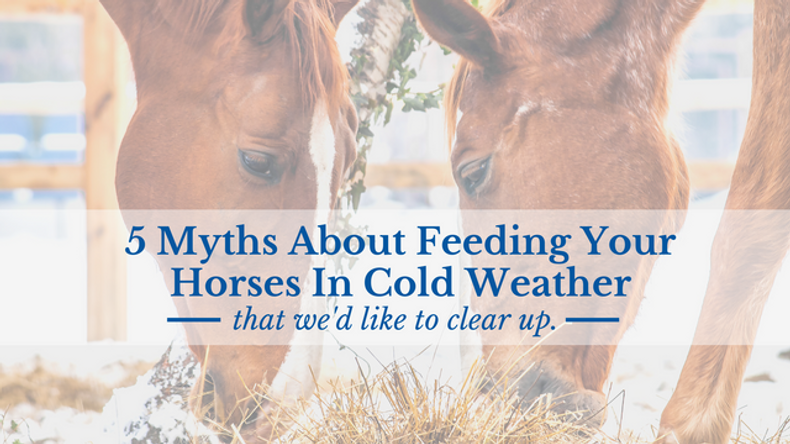
Know When Your Horse Is Cold
A thermoneutral zone (TNZ) is the range of temperatures at which a horse is most comfortable and healthy.
This range can differ depending on location or health status. For example, a horse living in Montana has the potential to be more tolerant to low temperatures than a horse living in Florida. Also, a horse suffering with a metabolic disorder or other ailment vs. a healthy horse will have different TNZ’s. The same 32 degrees at freezing could be comfortable for one, and worrisome for the other.
Use your best judgment along with body language cues to determine if your horse is uncomfortable. Signs of a cold horse are:
- Shivering
- Low head/down ears
- Tucked tail
- Decreased water intake
A healthy, well-acclimated horse with a quality winter coat, adequate food, and dry shelter should not need a blanket.
Air-pockets created by fluffy long hairs have an insulation-like effect and can keep a horse very warm. Clipped or slick horses under lights, very old, very young, ill, and underweight horses may require blanketing to maintain their temperature.
*Blankets come with their own set of risk factors, so be sure to select carefully and check blanketed horses often.
Use Forage as Fuel
The digestion process a horse goes through operates as an internal heater. During cold snaps, make sure quality forage is readily available, so your horse can keep their natural furnace running 24/7.
Winter forage tips:
- Quality Counts: Source nutrient dense, horse-safe hay. Red flags include mold spots, weeds, trash, and insects.
- Buy In Bulk: When possible, stock up on forage to maintain a consistent diet through challenging weather. The less change happening at once, the better.
- Reduce Waste: The use of slow feeders or hay nets make sure less feed is lost and always accessible.
- Alternative Forage: When sources are scarce, lean on a pelleted forage such as Alfa Nibblets to provide energy when your hay needs to be replaced or supplemented.
- Forage Extenders: Forage extenders are designed to fill nutritional gaps when forage must be limited or is less nutrient dense. Products such as Equilene Complete can be used as a forage extender or as a complete diet when needed.
Avoid Wintertime Dehydration
Horses will often slow or stop drinking in cold weather. Aside from general health, the increased risk of impaction colic, due to decreased water intake, is a serious concern.
There are several ways to keep your horse hydrated:
- Salt and Electrolytes: Always have free-choice salt available, and supplement electrolytes during cold snaps or a metabolic pH balancer such as TurboMag BCAA.
- Grain Mash: Feed your regular daily grain or pelleted forage with a serving of salt or electrolytes as a mash in warm water. Avoid hot water, and provide a transition period when doing so.
- Warm(er) Water: If available, offer a bucket of lukewarm water a couple times a day to encourage drinking. When given the option, horses prefer warm water over icy.
- Tank Covers: A tank cover with a drinking hole can be fashioned out of foam or other horse-safe material, to keep the surface of your tank from freezing.
- Remove Ice: If electricity is not an option, be sure to remove all ice from tanks after breaking through.
- Insulated Buckets: For those that hang buckets in stalls, insulated buckets can keep water from freezing for longer, but there is always a chance the surface will freeze.
- Heated Automatic Waterers & Corded Tank Heaters: These seem like a godsend, but don’t assume you can go without checking! If there is an electrical short, a horse can sense the smallest current running through the water and will refuse to drink.
Tune in for more:

